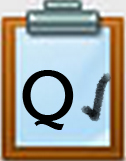Q4 Abstraction: Mad Libs & Problem
Mad Libs
Filling in the blanks of a sentence could be a Mad Lib. Mad Libs are a fun way to learn about abstraction. You or a family member may have purchased a Mab Lib book where you and your friends filled out it together to create funny stories.
Step 1. Take some time to check out the online options of Mad Libs listed below.
- Go to RedKit and choose several of the story titles to play. Try it with someone where you both choose the same title, but fill it in separately and compare the end results. The story will be the same, but the details are going to be different.
- A couple of other options:
Step 2. Reflect on how this helps you understand what abstraction is when dealing with solving a complex problem (computational thinking).
Your Problem
Step 3. Now that you understand what abstraction is, you will need to revisit your complex problem in your own Computational Thinking Planning Document and determine how you are going to present it. For example:
- How will you structure the problem, and what are the key points?
- What can be left out after defining the key points?
- If you are conducting research, what keywords will be necessary?
Add your answers to the questions in box 4 of your Computational Thinking Document, along with any additional thoughts on the abstraction of your problem.
Competencies & Standards
MITECS Michigan Integrated Technology Competencies for Students, and
5. Computational Thinker
a. Students formulate problem definitions suited for technology-assisted methods such as data analysis, abstract models and algorithmic thinking in exploring and finding solutions
b. Students collect data or identify relevant data sets, use digital tools to analyze them, and represent data in various ways to facilitate problem-solving and decision-making




